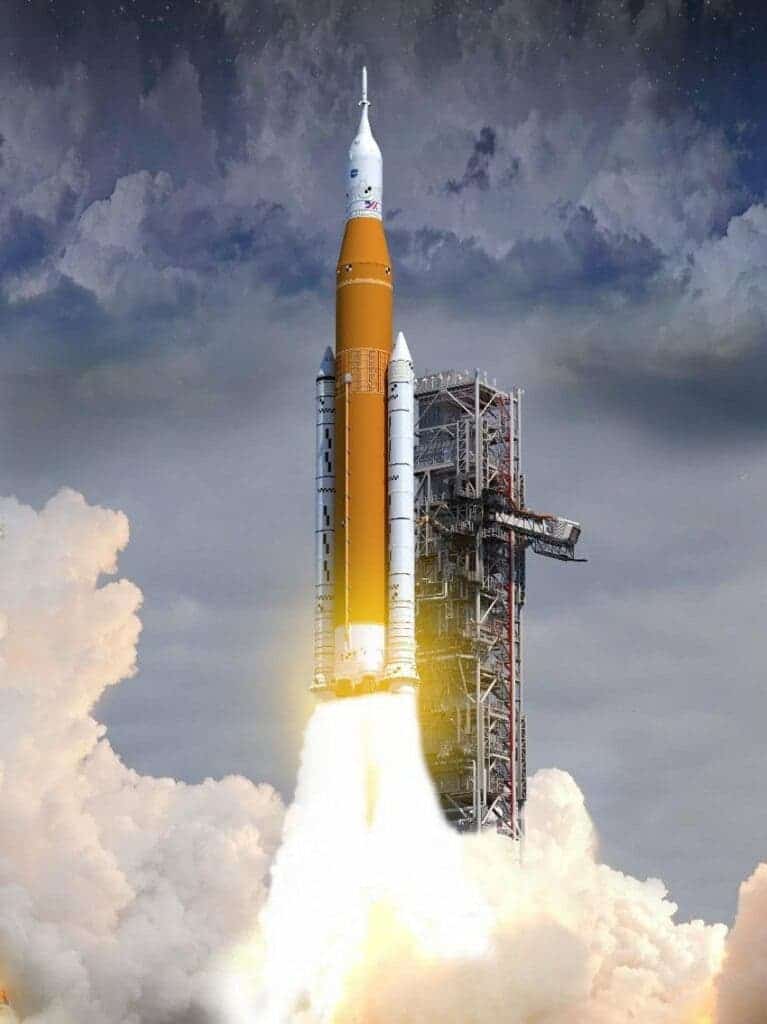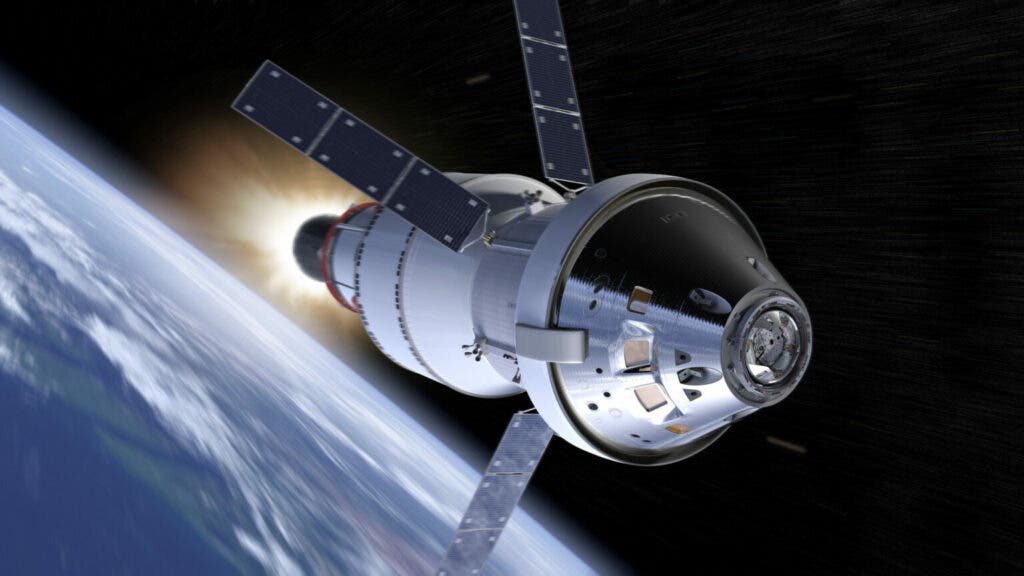On Tuesday afternoon, at around 1:47 AM EST from the Kennedy Space Center in Florida, NASA finally launched the much-anticipated Space Launch System (SLS) rocket and its uncrewed Orion capsule for a historic mission around the Moon. The mega-expensive, super heavy-lift SLS is the most powerful rocket in history, capable of producing 15% more thrust than the Saturn V rocket used during the Apollo era to send the first astronauts to the moon during the 1960s and 1970s.
The mission, known as Artemis 1, is supposed to test new systems and capabilities in anticipation of a 2025 mission that will see NASA put boots back on the Moon. Artemis is named after Apollo’s twin sister, who in Greek mythos is the goddess of the Moon just like Apollo is the god of the Sun.
Two minutes after countdown, the SLS’s rocket boosters expended all their solid propellant and were jettisoned. At the 8-minute mark, the core boosters started burning their liquid fuel and they too were jettisoned after they ran out of fuel. Next, Orion and SLS’s upper stage will circle Earth, after which the uncrewed Orion capsule will detach and start deploying its solar arrays and begin its journey toward the lunar orbit.
The capsule won’t land on the moon but rather orbit our planet nearby before returning to Earth after 26 days. For now, the job of the SLS is done.
Artemis 1: back to the moon

This inaugural journey comes after years of delays and numerous recent false starts owed to technical faults — and this particular launch was not spared either. Mission engineers noticed intermittent leaks spring up above the threshold NASA is comfortable dealing with during the fueling process prior to launch, forcing a halt to the fueling tanks. The ‘red crew’ — a special team of highly trained technicians — was called in to make last-minute repairs right in the ‘blast danger area’ while the rocket was still loaded with propellant. It’s not clear what their job was, but some were caught on camera tightening something. But whatever they did, it worked and the mission was given the green light again, after a delay of about 40 minutes from T-0.
Of course, trouble never comes alone. The military informed NASA that one of its radars used in an array that provides weather forecasting and tracking after launch went dark. The problem turned out to be a faulty ethernet switch of all things, which took more than an hour to replace. Thankfully, despite these setbacks, the mission wasn’t aborted and the SLS safely delivered its payload into Earth’s orbit.
“That’s the biggest flame I’ve ever seen. It’s the most acoustical shockwave that I have ever experienced,” commented Nasa Administrator Bill Nelson after watching the night-time lift-off.
Artemis 1 does not carry any astronauts nor will it land on the moon. Instead, after separating from the SLS, the unmanned Orion capsule will embark on a mission around the moon, which see it come as close as 96 kilometers (60 miles) to the lunar surface. After circling the moon, the capsule will take advantage of the moon’s gravity to propel itself back toward Earth like a slingshot.
Once it has completed its mission, Orion is supposed to slash down into the Pacific Ocean, right off the coast of San Diego in California, from where it will be retrieved by NASA.
The main objective of Artemis 1 is to demonstrate the capabilities of the massive, but previously untested SLS, in preparation for much more ambitious missions that will see NASA astronauts travel to the moon after an absence of more than 50 years. This is why Orion has mannequins in the astronaut seats, not all that different from crash test dummies, with the notable distinction they’re fitted with many more high-tech sensors. Artemis 1 also carries cube satellites and a host of science experiments.
The most powerful rocket ever
Towering close to 100 meters (322 feet), the skyscraper-sized SLS is capable of generating a ground-shacking 8.8 million pounds of thrust, which is about 15% more than the Saturn V rockets. SLS is powered by four liquid-fueled RS-25 engines, virtually the same as those that used to power the retired Space Shuttles. The current version of the SLS is known as Block 1, which is supposed to run for three Artemis missions.
The origin of the SLS can be traced back to 2010, a time when NASA was preparing to retire its aging Space Shuttle program and the space agency was working on a new initiative to put American astronauts back on the Moon called Constellation. While Constellation was eventually canceled, NASA recycled a design for a rocket proposed in the program — a giant rocket called Ares V — and morphed it into the SLS. The development of SLS would leverage heritage designs and hardware, such as rocket engines from the Shuttle, in order to make it cheaper and quicker. But the SLS turned out to be anything but cheap or timely.
SLS has been plagued by more than a decade of painstaking delays and budget extensions that have seen the rocket’s development cost a staggering $11 billion. According to a recent estimate from NASA’s inspector general, each of the rocket’s first four planned flights will cost $4.1 billion. By contrast, the official 2012 estimates were that SLS would cost $6 billion to develop and $500 million per launch, the first of which was supposed to debut in 2017.
The final cost of the ambitious rocket has earned it a lot of criticism, with some arguing for the SLS’s cancelation and the funding of alternative deep space launch vehicles developed by supposedly more efficient and nimbler private space companies. SpaceX’s Starship rocket, for instance, which is still in development, is supposed to do what SLS does and perhaps even more, and at a much lower cost.
Now, the time has come for the SLS to prove its naysayers wrong. History will ultimately judge whether SLS was all worth it.
The capsule that could

The Orion capsule can fit four astronauts and can provide life support for up to 21 days without docking with a space station or another spacecraft. Once in orbit, Orion will dock with ESA’s service module, which, much like a train engine pulls passenger carriages, will take the capsule to its destination and back.
During its current mission, Orion will travel farther than any other crewed spacecraft before it. The same capsule is supposed to take astronauts beyond the Moon, for visits to asteroids and even Mars.
At the end of its long journey around the Moon, Orion is supposed to re-enter Earth’s atmosphere at about 25,000 miles per hour. This will be the ultimate test for the capsule’s new heat shield and set of parachutes that will help it make a soft splash landing into the ocean.
Onwards to the moon
The ultimate goal of the Artemis mission is to bring NASA astronauts back to the Moon by 2025, a deadline that should be regarded with skepticism considering the space agency’s current track record. Whether or not this goal can be achieved according to NASA’s plans and timelines is, like most things, predicated on funding. NASA spent close to $40 billion on the program so far, with an additional $93 billion likely needed through 2025 for Artemis 3.


